

Grow leek from seed to harvest: it’s fairly easy.
Key leek facts
Name – Allium porrum
Family – Alliaceae
Type – vegetable
Height – 15 to 24 inches (40 to 60 cm)
Exposure – full sun
Soil – light, drained
Lead time: sow 5-7 months before harvest – Harvest: summer, fall, winter
Here is our advice on how to grow leek well, from sowing to harvest – without forgetting the all-important ridging!
Read also:
The sowing season for leek extends more or less from mid-January to mid-September.
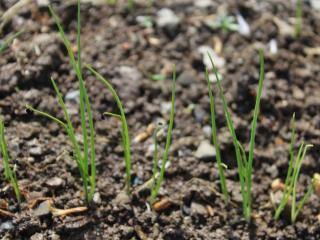 Sowing can start relatively early in the season, as long as there is a protected space that is relatively warm (above 60°F, or 15°C) like a greenhouse or an indoor space fitted with heating.
Sowing can start relatively early in the season, as long as there is a protected space that is relatively warm (above 60°F, or 15°C) like a greenhouse or an indoor space fitted with heating.
It is of no use to sow leek in the ground directly until soil temperatures reach at least 54°F (12°C).
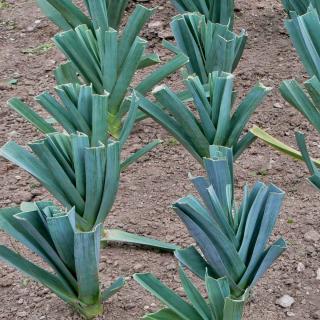 To harvest leek in the spring, you must have sown the leek at the end of summer or during fall of the preceding year.
To harvest leek in the spring, you must have sown the leek at the end of summer or during fall of the preceding year.
To harvest leek early in the season, it is necessary to sow seeds during the winter.
This is the ideal season to grow leek because temperatures allow for normal, outdoor cultivation.
Growing leek is very easy, and here is how to ensure a bountiful harvest and avoid diseases.
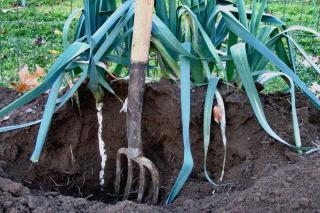 In order to whiten the base of the leek, it is important to ridge leek stems regularly. This is also called blanching. This is an important step in growing leek because only the underground portion will become the white part of the stem.
In order to whiten the base of the leek, it is important to ridge leek stems regularly. This is also called blanching. This is an important step in growing leek because only the underground portion will become the white part of the stem.
Leek plants only need water in case of prolonged dry spells or heat waves. It’s better to avoid over-watering.
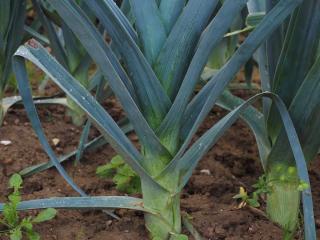
Note that ridges can also help drain excess water away, or retain it, depending on how they run along the slope. Plan your rows depending on whether you need to make sure water runs off easily (top → down ridges) or retain water in dry areas (ridges along a same level line).
>> Video tutorial on how to grow leek <<
Leek is vulnerable to certain diseases, and preventive treatment is recommended; but best is to space the stems well to avoid fungus altogether.
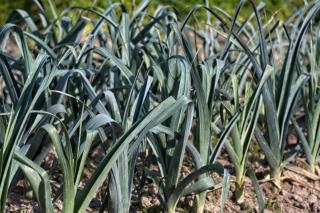 Run the hoe along the ground to remove weeds and let rainwater seep into the ground easily.
Run the hoe along the ground to remove weeds and let rainwater seep into the ground easily.
Leek responds more or less well to the presence of other vegetables in the patch. Here are the good companion plants followed by the ones leek is incompatible with.
In the vegetable patch, it is important to match plants correctly to ensure that companion plants are located near each other.
egetables to grow near leek:
Carrot, celery, strawberry, onion, tomato, lettuce, corn salad or asparagus
Certain plants would compete with leek and it is best to plant them apart to avoid them hindering each other.
Bean, silverbeet, cabbage or pea.
Cooking is a very different story altogether, and combining these vegetables together can be very savory.
For good crop rotation, in order to maintain good levels of nutrients in the soil, here are the vegetables that are suited to planting after leek:
Carrot, cucumber, coriander, squash, bean, turnip, radish or tomato.
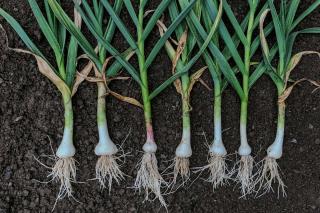 All leek varieties share the same health benefits and therapeutic values.
All leek varieties share the same health benefits and therapeutic values.
You will perhaps find solace in the following varieties as well:
Most leek varieties are very hardy and will let you harvest this vegetable all winter long, straight from garden to table.
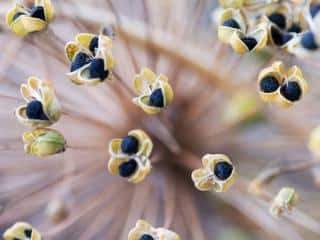 Let a few of the nicest, most vigorous stalks go to seed. Beautiful flowers will pop up that are white or shades of violet. These dry out with tiny seeds in each capsule at the end.
Let a few of the nicest, most vigorous stalks go to seed. Beautiful flowers will pop up that are white or shades of violet. These dry out with tiny seeds in each capsule at the end.
Label a paper pouch with the date and the variety, and store in a cool, dry place that’s well ventilated.
Note that because of cross-pollination, the variety might not come out true, but unless it’s a hybrid, it will keep many of the mother plant’s characteristics.
Tip: those dry flowers make for excellent dried flower bouquets because they hold for a long time.
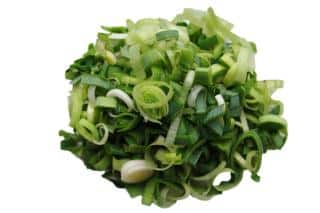 Its origin stems from the Mediterranean sea, and leek is cultivated today almost all over the world.
Its origin stems from the Mediterranean sea, and leek is cultivated today almost all over the world.
Very much savored for its taste and nutritional value, leek is also well recognized for its many health benefits and therapeutic values.
It is replete with vitamins C, E, fibers and pro-vitamin A, and leek helps the digestive tracts function correctly and keeps many illnesses at bay.
Leek is a low-caloric vegetable often recommended for diets, which also helps regulate gastrointestinal functions.
Leek can be eaten both raw and cooked, but most leek-based recipes involve cooking it. Pie or leek quiche are favorites.
Read also about leek:
<!–silent
–>
Since it has a high fiber content, leek is excellent to ease digestion and also delivers many needed vitamins!